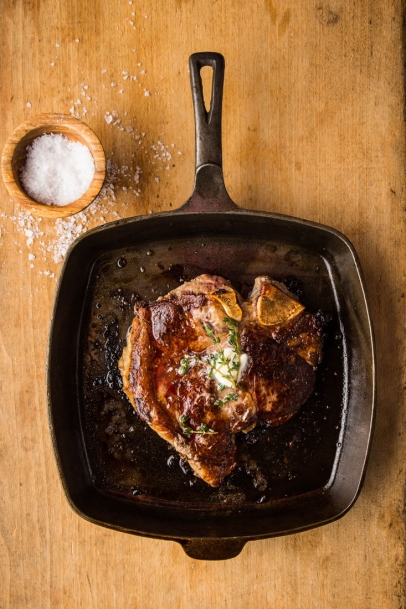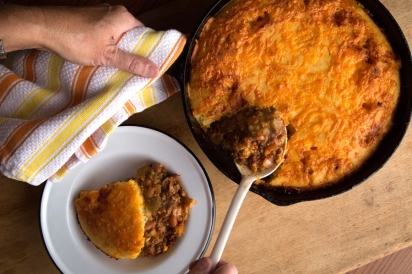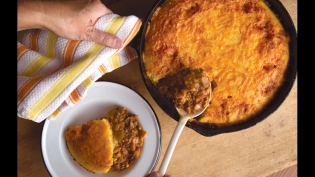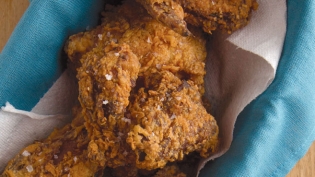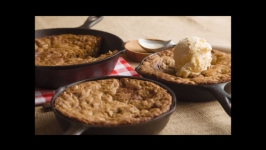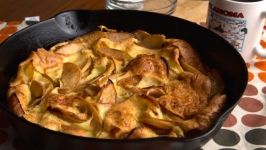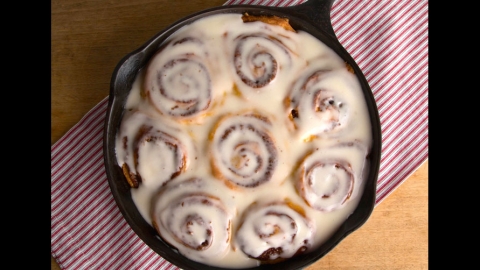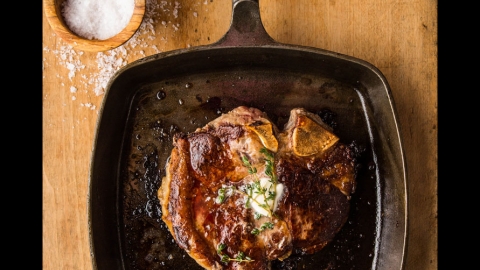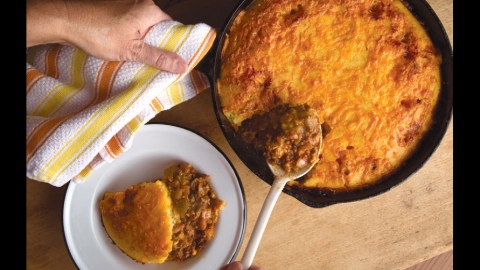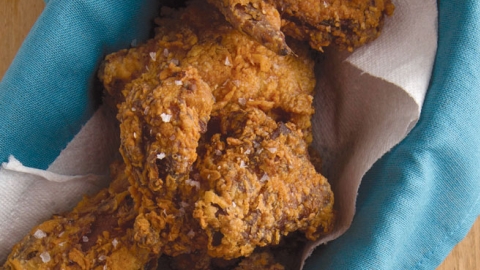Techniques and Ingredients: Metal of Honor
METAL OF HONOR
The black magic of cast iron just gets better with age
I have inherited almost every piece of cast-iron I own from either my maternal and paternal grandparents. Throughout the years I have also absconded with a few pans from my mother and mother-in-law—with or without their permission. So lock your cabinets when I visit, for I might have a problem. I like to think of it more as a love affair, though, for there is no better gift than a well-worn, much-loved cast-iron pan.
I can only imagine the meals these pans have produced. Countless batches of fried chicken went down in my paternal Grandmother Louise’s kitchen in Jackson, Mississippi, and my mother’s mother, Jessie, made almost everything in her cast-iron skillets, even in the Florida heat that permeated her kitchen. These meals amount to decades and decades of cornbread, chicken and dumplings, pork chops in mushroom sauce, cobbler, skillet cakes and more. And now, every time I retrieve a pan from the cabinet, I am reminded of family members long since departed.
These days, however, cast iron can sometimes get a bad rap. It’s heavy to deal with, demands occasional care and often gets shoved into the depths of cabinetry so retrieval is problematic. Does keeping cast-iron pans in ship shape take a bit of work? Absolutely. But once your pans are seasoned with a bit of elbow grease, they will love you right back with every dish you prepare in them.
Cast iron has been around since the Middle Ages. And yes, it tends to be heftier than regular cookware. However, cast iron is a great conductor of heat, meaning it holds the temperature well, allowing for a nice sear and, if your pan is seasoned well, a natural nonstick ability. Could these recipes be made in other pans? Certainly. But the outcome may or may not be as amazing.
Some health professionals also claim that cooking in cast iron has health benefits. For one, if your pan is well seasoned you can cook with much less butter or oil. Another benefit to using cast-iron pans instead of more modern nonstick pans is that you avoid the chemicals used in the coating that get released when the pans are heated. Cast iron can, however, leach valuable iron into your food, a benefit for those who may be iron deficient.
The benefits don’t end with health. Castiron pans are versatile and relatively inexpensive— you can score a brand new Lodge skillet for less than $30, while an equivalent size in stainless steel can run upwards of $150. Scan local tag sales for well-worn (and often well-seasoned) pans for even less money.
Once you make the jump to cast iron, follow these simple steps to keep your pans in good condition—and they will be ready to pass down to generations to come.


